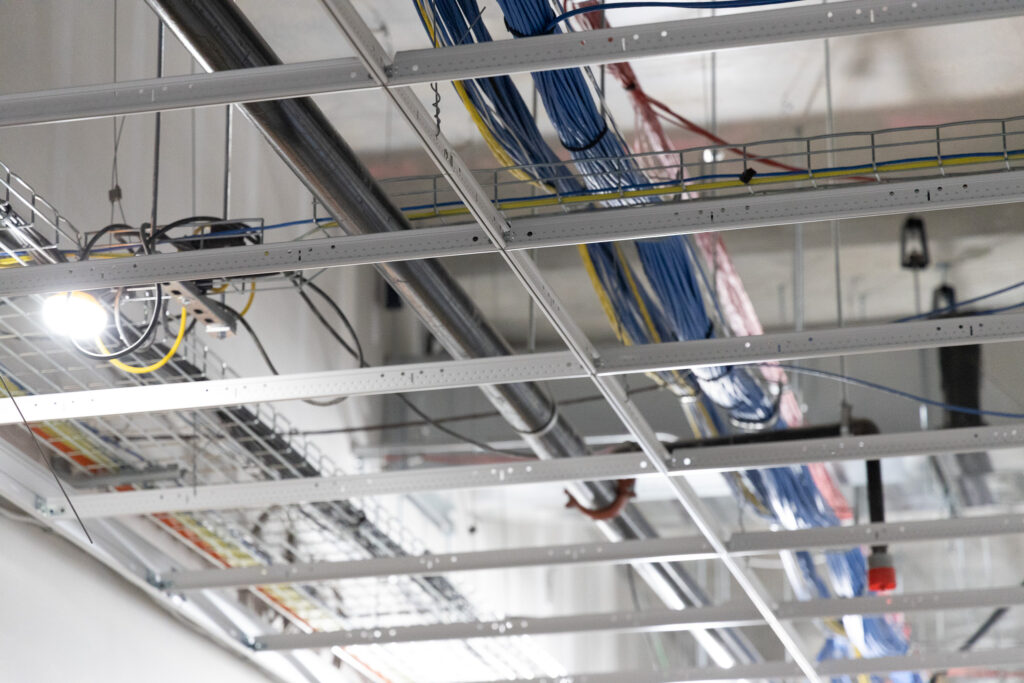If you want your business to grow without technological hiccups, it’s time to think about what’s behind the walls—and under the floors. We’re talking about your network infrastructure, specifically the cabling that powers your phones, computers, security systems, and more. The way you handle your network cabling directly impacts your operational efficiency, and that’s where the difference between structured cabling and unstructured cabling becomes critically important.
For companies looking to improve performance and scalability, Structured Cabling for Business is no longer optional—it’s essential.

What is Structured Cabling?
Structured cabling is a standardized and organized approach to designing and installing a cabling system that supports multiple hardware uses. It follows recognized industry standards, such as TIA/EIA-568, to ensure that everything is laid out logically, neatly, and consistently. With structured cabling, cables are labeled, bundled, routed through proper pathways, and terminated at patch panels and jacks in a way that’s easy to manage and scale.
A typical structured cabling system includes:
- Horizontal cabling connecting workstations to the telecommunications room
- Backbone cabling connecting different IT rooms or buildings
- Patch panels for modular connection points
- Wall outlets and faceplates
- Cable management hardware for organization and airflow
In short, structured cabling for business acts as a blueprint for your network infrastructure—one that helps your business function efficiently now and in the future.
What is Unstructured Cabling?
By contrast, unstructured cabling—sometimes called “point-to-point” or “ad-hoc” cabling—is what happens when cables are added over time without a clear plan or method. This usually results in a messy tangle of wires that are hard to trace, manage, or scale. Known in the industry as the “spaghetti network,” unstructured cabling may work temporarily but quickly becomes a problem as demands increase.
This type of setup is common in businesses that grow quickly or make frequent equipment changes without properly maintaining their infrastructure. While it may appear cost-effective in the short term, the long-term consequences often include frequent outages, overheating, inefficiency, and high maintenance costs.
Key Differences Between Structured and Unstructured Cabling
| Feature | Structured Cabling | Unstructured Cabling |
|---|---|---|
| Design | Pre-planned and organized | Random and reactive |
| Standards | Follows industry standards (e.g., TIA/EIA-568) | No formal standards |
| Scalability | Easily scalable | Difficult to expand |
| Maintenance | Fast and simple | Time-consuming and confusing |
| Appearance | Professional and clean | Messy and chaotic |
| Downtime | Minimized | Frequent and unpredictable |
Why Structured Cabling for Business Matters
Choosing structured cabling for business means setting your company up for long-term success. Here’s how it makes a difference:
1. Simplified Troubleshooting
When cables are labeled and organized, identifying and fixing a connectivity issue becomes significantly faster. Your IT team won’t waste hours hunting for the right line in a sea of tangled wires.
2. Future-Proof Infrastructure
Structured cabling is designed with scalability in mind. Adding new devices, expanding to another floor, or switching to new technologies can be done without overhauling your entire system.
3. Improved Aesthetics and Airflow
A clean server room not only looks professional but also promotes better airflow, reducing the risk of overheating and equipment damage.
4. Reduced Downtime and Costs
Fewer disruptions and faster fixes mean reduced downtime and lower labor costs over the long haul. What you invest upfront pays off in reliability and efficiency.
5. Compliance and Safety
Many industry regulations require compliance with cabling standards. Structured cabling ensures you stay aligned with fire codes, insurance requirements, and technical certifications.
Common Signs You Need Structured Cabling
Your business might benefit from structured cabling if:
- You have an unorganized server room
- Your team struggles to identify cable paths
- You’re adding new devices frequently
- You’re planning an office relocation or renovation
- Your network performance is slow or unreliable
In today’s digital world, data is your lifeline—and you can’t afford to take shortcuts with your cabling infrastructure.
Real-World Analogy: The Library vs. The Junk Drawer
Think of structured cabling as a well-organized library. Each book (or cable) has a place, a label, and a system that makes finding and using it quick and easy. Unstructured cabling is more like a junk drawer—everything gets thrown in randomly, and good luck finding what you need when it matters most.
The Bottom Line
The difference between structured and unstructured cabling boils down to planning, organization, and long-term value. Structured cabling for business offers a smart, scalable solution that makes life easier for your IT staff and keeps your operations running smoothly. Unstructured cabling might seem like a quick fix, but it often results in greater costs, inefficiency, and frustration down the road.
Ready to clean up your network and prepare for growth? Our experienced technicians specialize in designing and installing structured cabling systems tailored to your business needs. Whether you’re upgrading your current system or starting from scratch, we’ll help you build a more reliable and future-ready network.